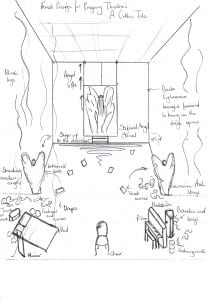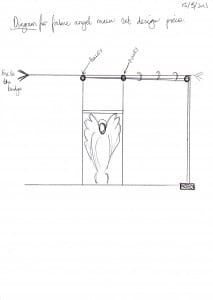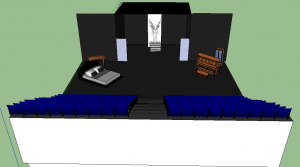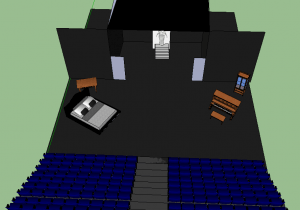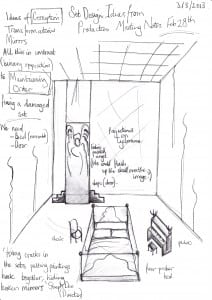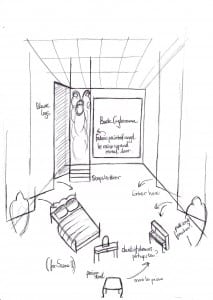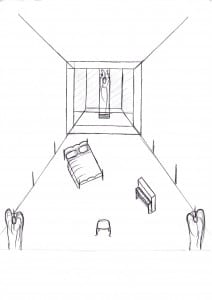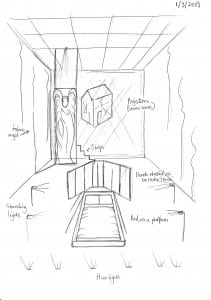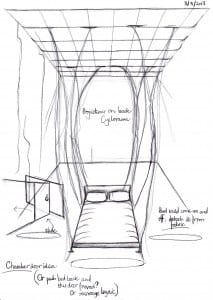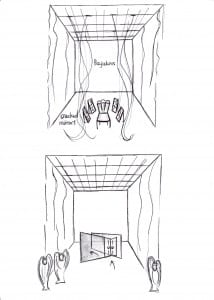The Final Design and Google SketchUp Concept
I have now reached the stage where I have collaborated, developed and eliminated ideas from my previous set design concepts, to create the final set design which we will use as the official guide for set and props positioning in the production of ‘A Gothic Tale’.
The final set includes a well-rounded and coherent expression of what our production is trying to convey. For example, drawing from the theme of a collision of two worlds, fairytale and dark gothic, I have decided to finalise my plans for constructing the wooden angels, which I will begin shortly, and finalise the fabric angel design. I decided, together with the production manager, to eliminate the use of the back cyclorama, as this was unnecessary, and move the fabric angel upstage centre, to create the most appealing composition possible. I have also been highly influenced by Edward Gordon Craig, with the use of tall vertical shapes and steps.
We plan to lift the fabric angel up to reveal the bloody chamber, of which the actors can either exit or enter through the back, or from the sides of the stage. Through this gap we will shine a strong beam of light, to add to the reveal and mystery of the chamber. The original positions of the bed DSR and the piano room DSL are to stay, particularly as this is a requirement from the script and the director and it is my job as Chief Designer to work with these specifications.
We concluded that the best method for suspending the fabric angel would be a pulley hoisting system, which will lift the angel to leave a gap of about 6ft, enough to walk up and through. I will need to purchase 7m of fabric to leave enough lift and drop room for the hanging.
I completed this Google SketchUp diagram as a virtual model of how the final stage will look and to give a clearer portrayal of how the set pieces will fit together in relation to the rest of the stage. This was certainly a helpful exercise when trying to establish the size of the bed and piano within the space. Our stage manager has managed to negotiate that we can have free wooden sheets to create the standing angels. This is excellent news, as not only does this mean that we can preserve our allocated set budget for other expenses, but I have an immediate resource which I can start work on as soon as possible.
I will also continue to be in consistent communication with the other members of the production team, as lighting plans will also be crucial to the success of the set design.
(Please click on the images to view larger versions)
Word Count: 493.
